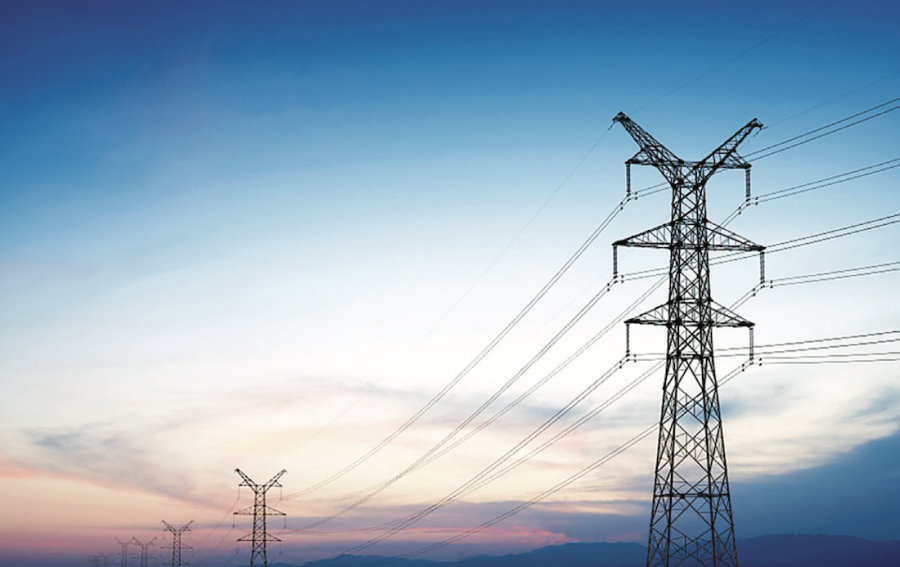
Disputes continue between the Nepal Electricity Authority (NEA) and the locals of Dumikas of Nawalparasi (East of Susta) who own land along the under-construction Bharatpur-Bardaghat Transmission Line Project.
According to the NEA, it has already erected 244 of the 246 pylons of the 74-km transmission line, but work on the two remaining pylons remains stalled owing to obstruction by locals who are demanding higher compensation for their land.
As per the NEA rules, it provides as compensation 20 percent of the value of the land that falls within 15 meters on either side of a transmission line. But the locals of Dumkibas are demanding compensation for the land falling within 50 meters on either side, hence the dispute, according to Pushpa Ale Magar, chairperson of ward 2 of Binaya Tribeni Rural Municipality.
The transmission line project is a part of the World Bank-funded Nepal-India Electricity Transmission and Trade Project under the NEA. The locals of the Dumkibas area in Binaya Tribeni Rural Municipality have been opposing the project saying the compensation offered for their land is too low.
The project’s work was stalled for over a year after the Supreme Court acting on a writ petition filed by locals issued an interim order in April 2021 to stop work on the two last pylons.
But on June 27 this year, the court vacated the interim order theoretically paving the way for the project to resume the pylon work. But work on site could not resume as locals have continued obstruction.
“The dispute between the project and the locals has not yet been resolved,” said Santosh Sah, chief of the Bharatpur-Bardaghat Transmission Line Project. “As a result, we have not been able to complete work on the 220kV line.”
According to Sah, they have already sat with the locals for over a dozen times to end the obstruction, but to no avail.
According to the NEA, around 50 households have land in the remaining section, which will be covered by the remaining two pylons.
“It is difficult to settle the dispute without properly compensating the households, Magar, the ward chair, said.
Although the NEA appears ready to pay more than 20 percent of the value of the land falling within 15 meters of the transmission line, it has not agreed to compensate for the land falling beyond 15 meters. NEA officials argue that if they paid compensation for the land beyond 15 meters, it will set a bad precedent and it will have to pay accordingly in other locations also.
NEA officials said they have agreed to pay up to 50 percent of the value of the land, particularly in the case of the land in Dumkibas. “The NEA last year decided to provide as compensation 50 percent of the total value of the land to those who will lose around 75 percent of their property to the transmission line.
“Those who will lose between 50 percent and 75 percent of their land will get 40 percent of the value as compensation,” said Sah. “Similarly, those who will lose between 25 percent and 50 percent land will get 30 percent of the value as compensation, and those losing less than 25 percent land will be paid 20 percent of the value of land in compensation.”
Since the farmers can continue farming the land under the transmission line, it does not pay full compensation for the land. But as the land under high-voltage lines cannot be used for any purpose other than agriculture, people are reluctant to provide land to power line projects. Also, banks and financial institutions do not accept such land as collateral for loans.
“As the people cannot utilise such lands for their commercial benefits, it is natural for them to demand maximum compensation,” said Magar.
With both the NEA and the local people sticking to their guns, it has been difficult to reach a solution. “I have asked the project chief to come up with a concrete offer that can satisfy the locals,” said Magar, who has also been organising the meetings with the stakeholders.
The NEA said in a statement on June 30 that the completion of this 220kV power line is vital to the supply of power to the western part of the country from the east, which would help reduce power imports from India through the bordering Tanakpur area of India.
The existing 132kv Bharatpur-Bardaghat transmission line connecting the country’s eastern region with the western side has been making it difficult to supply large quantities of power from one area to another, according to the NEA. The line can carry a maximum of 80 MW.
So, the NEA said developing high-capacity power lines across the country has been vital to ensuring reliable power supply across the country and to ensure reliable cross-border power trade.
The Bharatpur-Bardaghat transmission line is one of the many transmission projects that faced prolonged delays due to issues related to land acquisition.
Soon after the June order from the Supreme Court, the NEA had charged the completed sections of the transmission line. It charged electricity on a 56km section—from Aptari substation in Bharatpur to Arun Khola substation in Nawalparasi—of the 74 km 220kV transmission line in June-end, the NEA said. From Arun Khola, power was transmitted on the old 132kv transmission line to Bardaghat.












